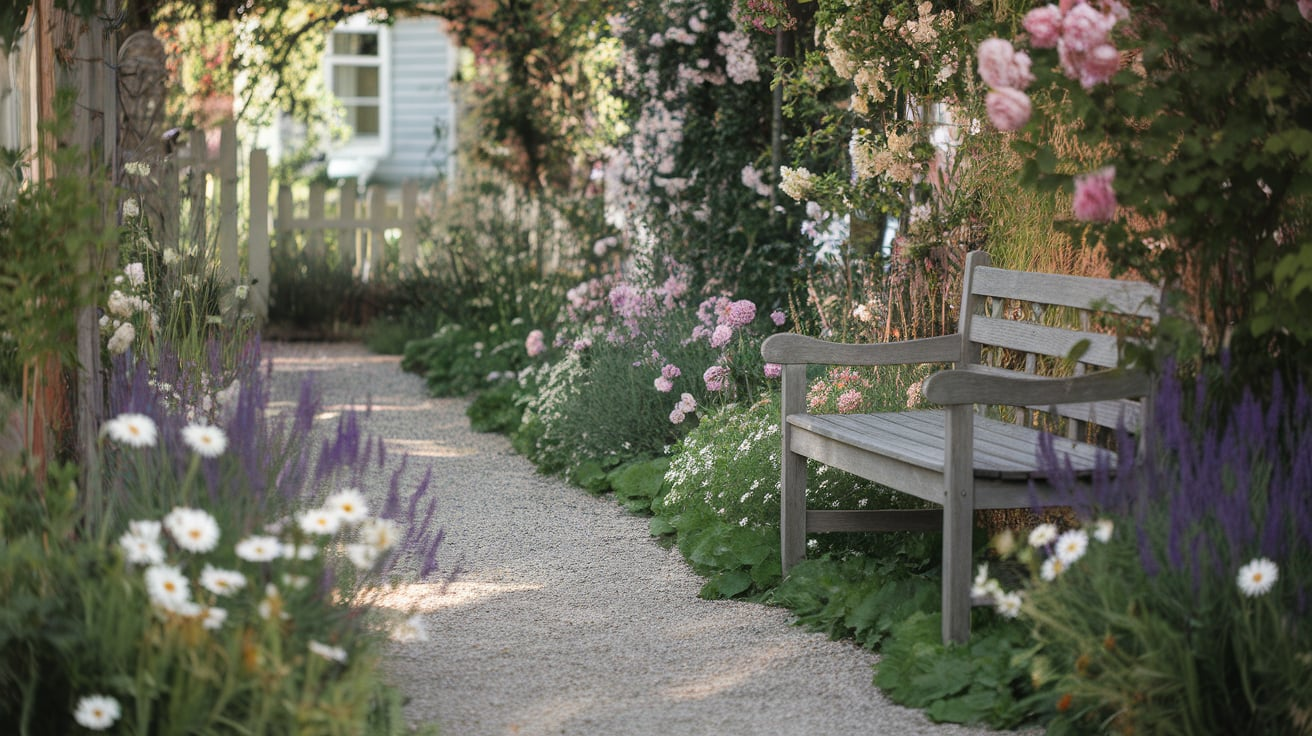I love the look of a cottage garden. It’s full of color, charm, and life. But I don’t always have the time to care for one. That’s why I started looking for ways to keep it simple.
I wanted flowers that bloom on their own, paths that stay neat, and a garden that still looks lovely without hours of work.
If you feel the same, you’re in the right place. In this blog, I’m sharing easy cottage garden ideas that save time and effort.
These tips help your garden grow with less stress. You don’t need fancy tools or special skills. Just a little planning and the right plants.
Let’s build a garden that’s beautiful and easy to care for, so you can enjoy it, not just work in it.
What Is a Cottage Garden?
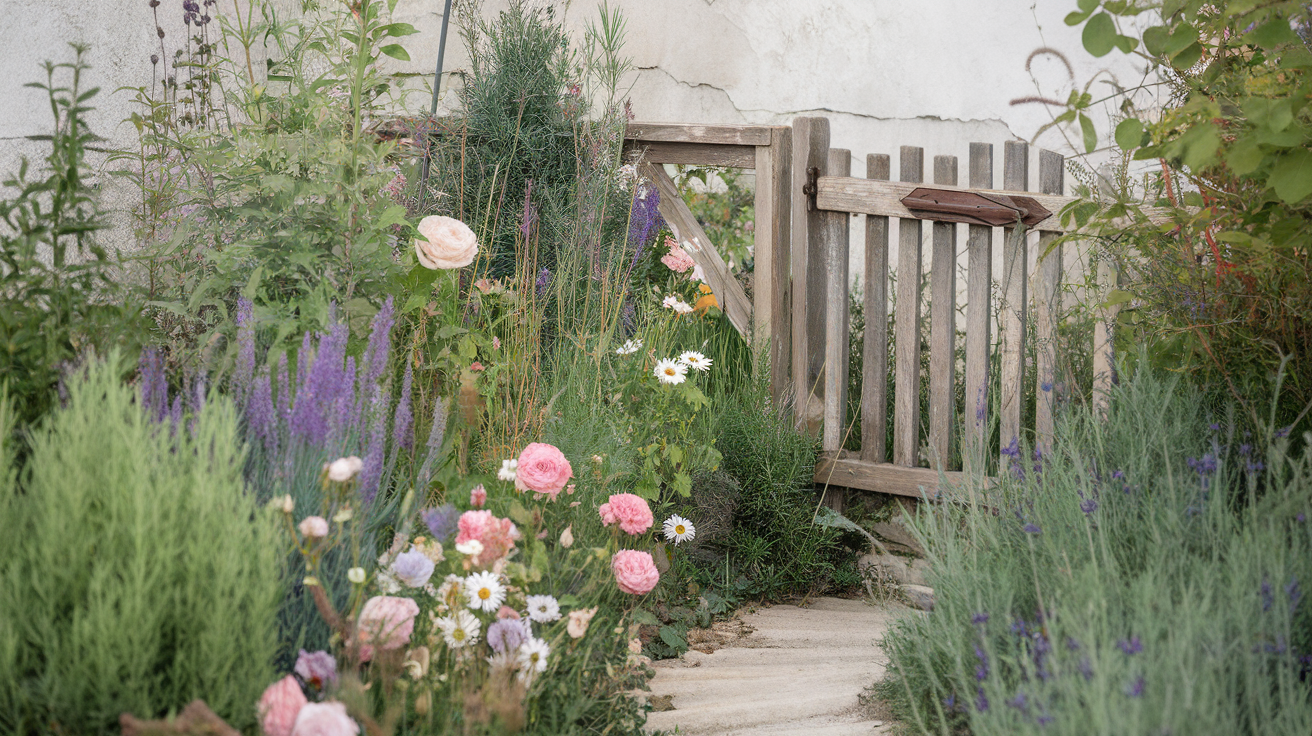
A cottage garden is a space full of life, color, and charm. It feels warm and welcoming, not neat or fancy.
Flowers spill over paths. Plants grow close together. It looks like nature did the planting, not a person.
Cottage gardens originated in small villages, where people cultivated herbs, flowers, and food all in one location.
They were made for use, not for looks, but they still turned out beautiful.
Today, cottage gardens are cherished for their rustic charm and cozy ambiance. They mix many kinds of plants and often have old-fashioned flowers.
You don’t need straight lines or perfect shapes. It’s about joy, not rules.
Key Elements of a Cottage Garden
Even though cottage gardens look free and wild, they do have a few key parts that make them special:
- Lots of Flowers: Bright, blooming flowers in many colors and shapes.
- Mix of Plants: A mix of perennials, annuals, herbs, and sometimes veggies.
- Tight Planting: Plants are closely spaced to prevent weeds and retain moisture.
- Curved Paths: Winding paths made of gravel, bricks, or stepping stones.
- Rustic Touches: Old fences, garden gates, clay pots, and wooden benches.
- Natural Look: Plants grow over the edges. Nothing is too trimmed or perfect.
- Pollinator-Friendly: Bees, butterflies, and birds love these gardens.
These parts work together to create a garden that looks full and alive, but doesn’t require too much maintenance.
How to Design a Low-Maintenance Cottage Garden
Designing a low-maintenance cottage garden is all about smart planning and plant choices. With the right setup, you can enjoy a full, blooming garden without spending hours caring for it.
1. Pick Low-Maintenance Perennials

Perennials are plants that come back year after year, so you don’t have to replant them every season. They grow, bloom, and rest on their own cycle. This saves you both time and money in the long run.
Great low-care perennials include:
- Coneflowers: Bright, strong, and bloom for weeks.
- Black-eyed Susans: Cheerful yellow flowers that attract pollinators.
- Daylilies: Come in many colors and are very hardy.
- Lavender: Smells nice, keeps bugs away, and loves dry soil.
- Hostas: Perfect for shady spots and need little care.
Once planted, just water when dry and cut them back once a year.
2. Use Mulch to Stop Weeds

Mulch helps your soil hold water and blocks sunlight from weed seeds. That means fewer weeds and less watering.
This is how to use it:
- Spread 2–3 inches of mulch around your plants.
- Keep it away from the base of stems so plants don’t rot.
- Use natural mulch like bark, straw, or shredded leaves.
Reapply once or twice a year to keep it working well. It also gives your garden a neat, finished look.
3. Choose Native Plants
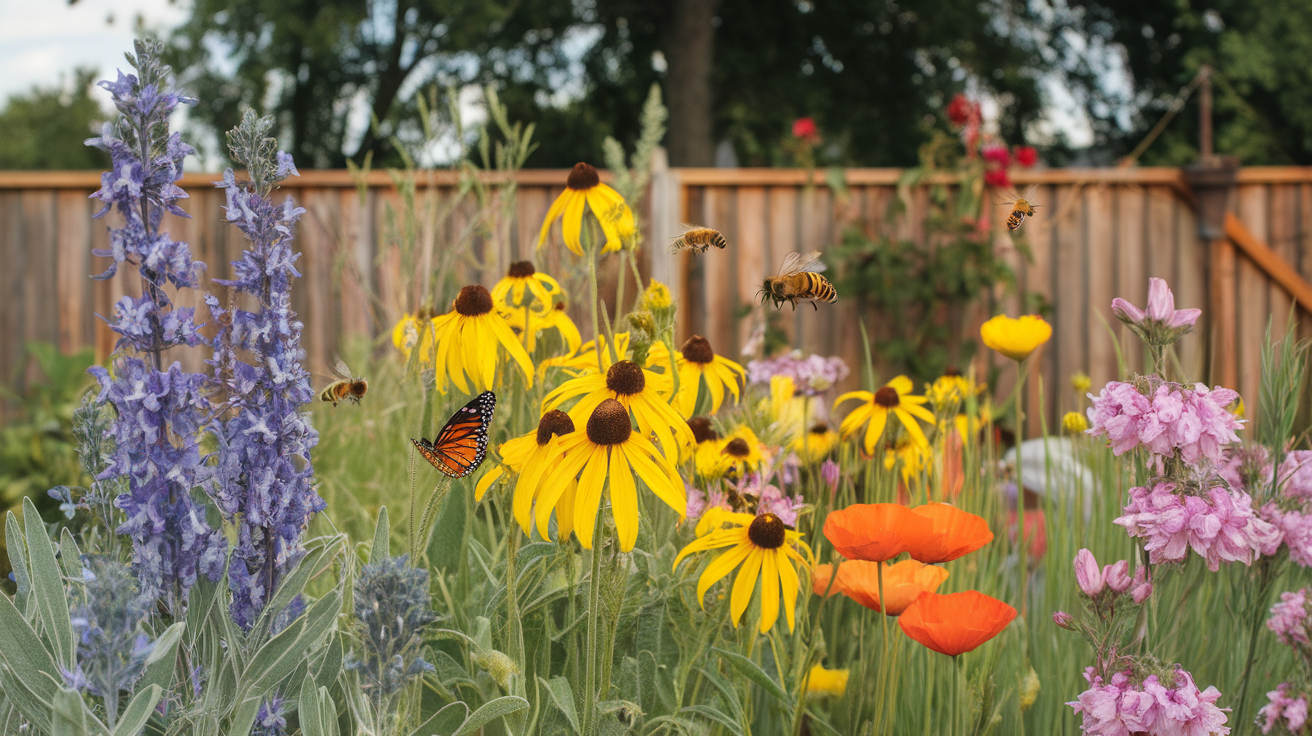
Native plants already know how to live in your area’s weather and soil. They can survive with less water, fewer bugs, and less attention.
Why does it save time?
- They don’t need extra care to thrive.
- They don’t need chemicals to fight off pests.
- They often bloom on their own schedule.
Ask a local garden center for native options. Alternatively, you can look online for a native plant list by region. Examples include bee balm, goldenrod, and purple coneflower.
4. Group Plants by Water Needs
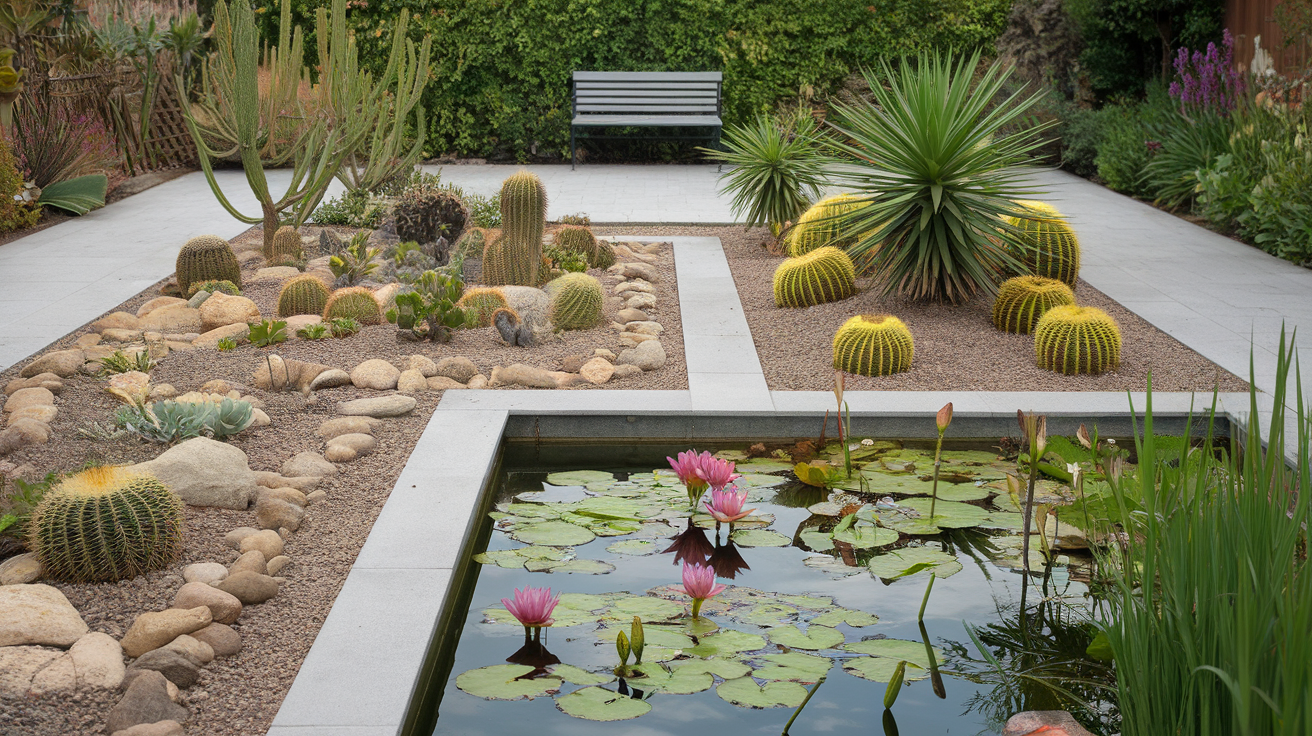
Not all plants are thirsty at the same time. When you plant high-water and low-water plants together, it gets tricky. Some may dry out, others may drown.
Instead:
- Group plants that like dry soil in one area.
- Place moisture-loving plants in another spot.
This way, you water each group the right amount, and you don’t waste water or hurt your plants.
5. Add Ground Covers
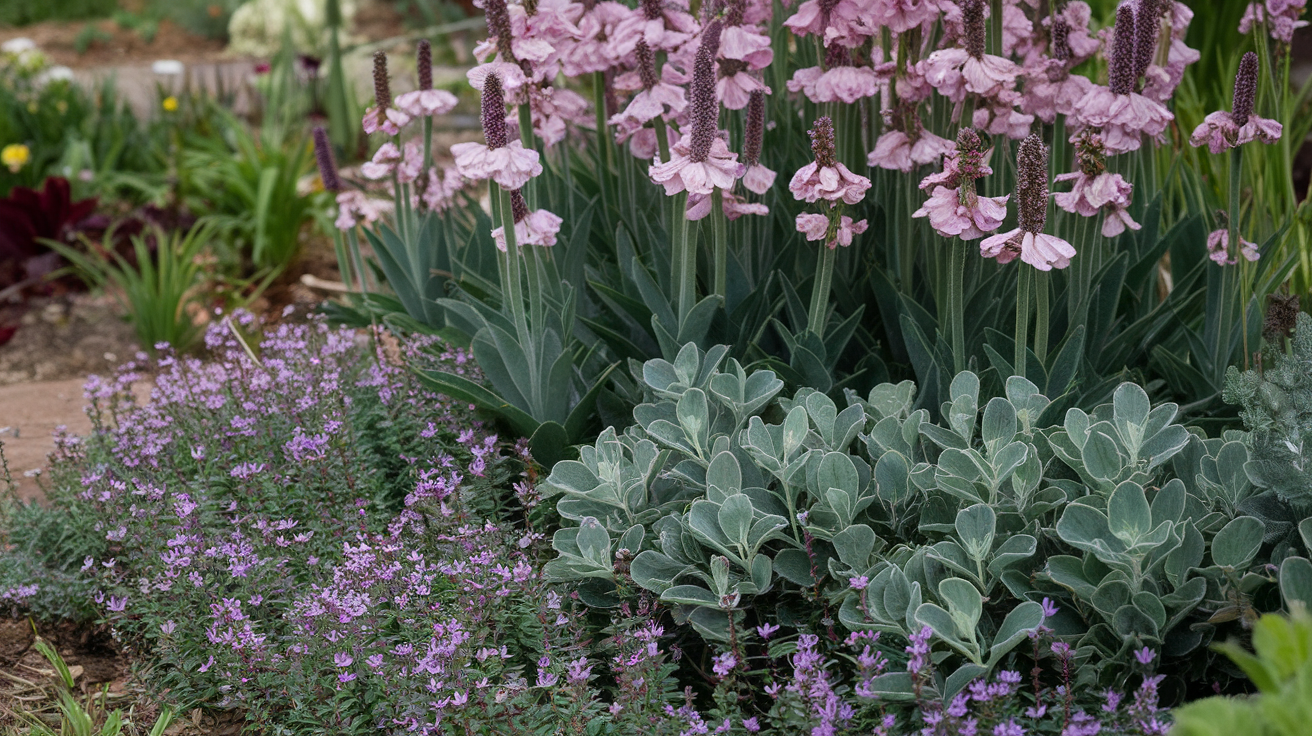
Ground covers are low-growing plants that spread across the soil. They block weeds, keep moisture in, and fill in bare spots.
Some low-care ground covers:
- Creeping thyme: Smells great, and you can walk on it.
- Lamb’s ear: Soft leaves and easy to grow.
- Ajuga: Grows fast and adds deep color.
- Sweet woodruff: Perfect for shady areas.
They give your garden a finished, full look with less work.
6. Install a Drip Watering System
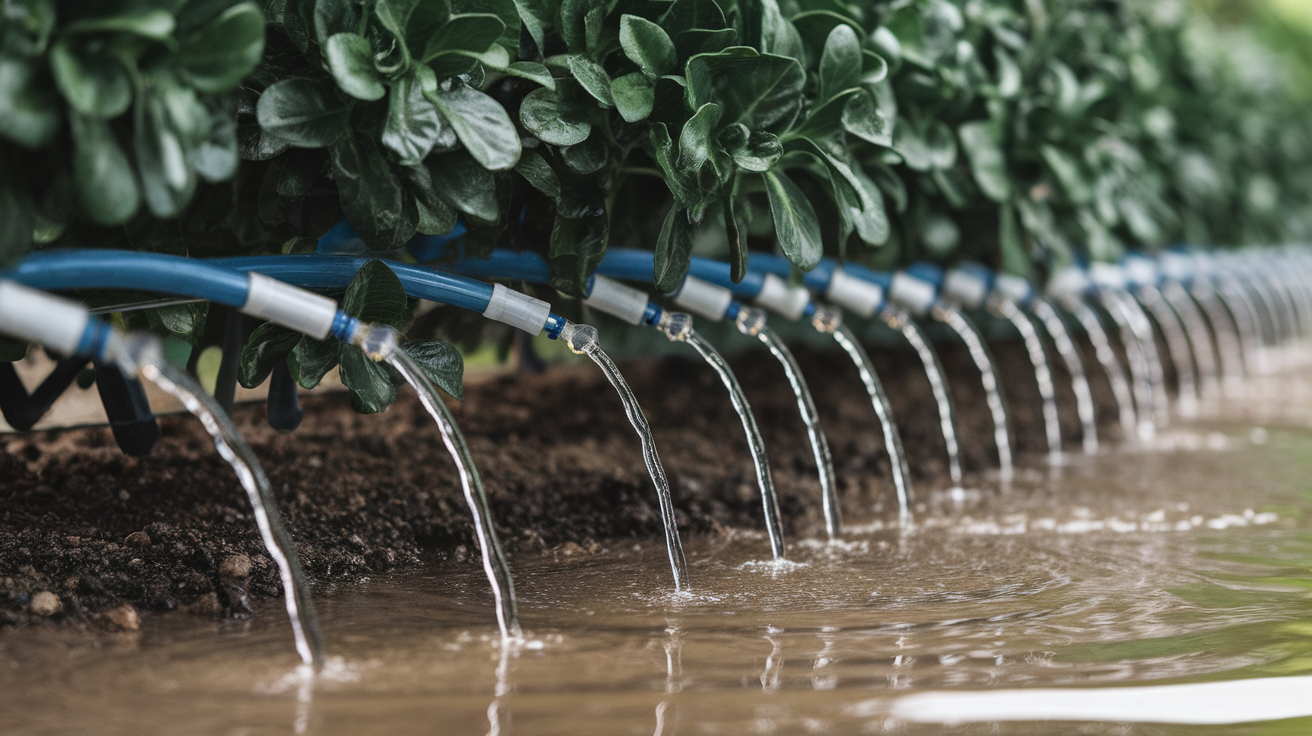
Drip systems water your plants slowly at the roots. You waste less water, and plants get what they need.
How it helps:
- No more standing with a hose.
- You can set a timer to water early in the morning.
- It avoids leaf diseases caused by overhead watering.
They work great in garden beds, borders, and even pots. Set it once and let it run all season.
7. Use Raised Beds or Borders

Raised beds are garden areas built up with wood, bricks, or stone. They make gardening easier on your back and stop weeds from spreading in.
Benefits:
- Better drainage means healthier roots.
- You can control the soil quality.
- It keeps things looking tidy.
Great for herbs, flowers, and even small veggies. You can even build waist-high beds to avoid bending.
8. Plant in Clumps, Not Singles
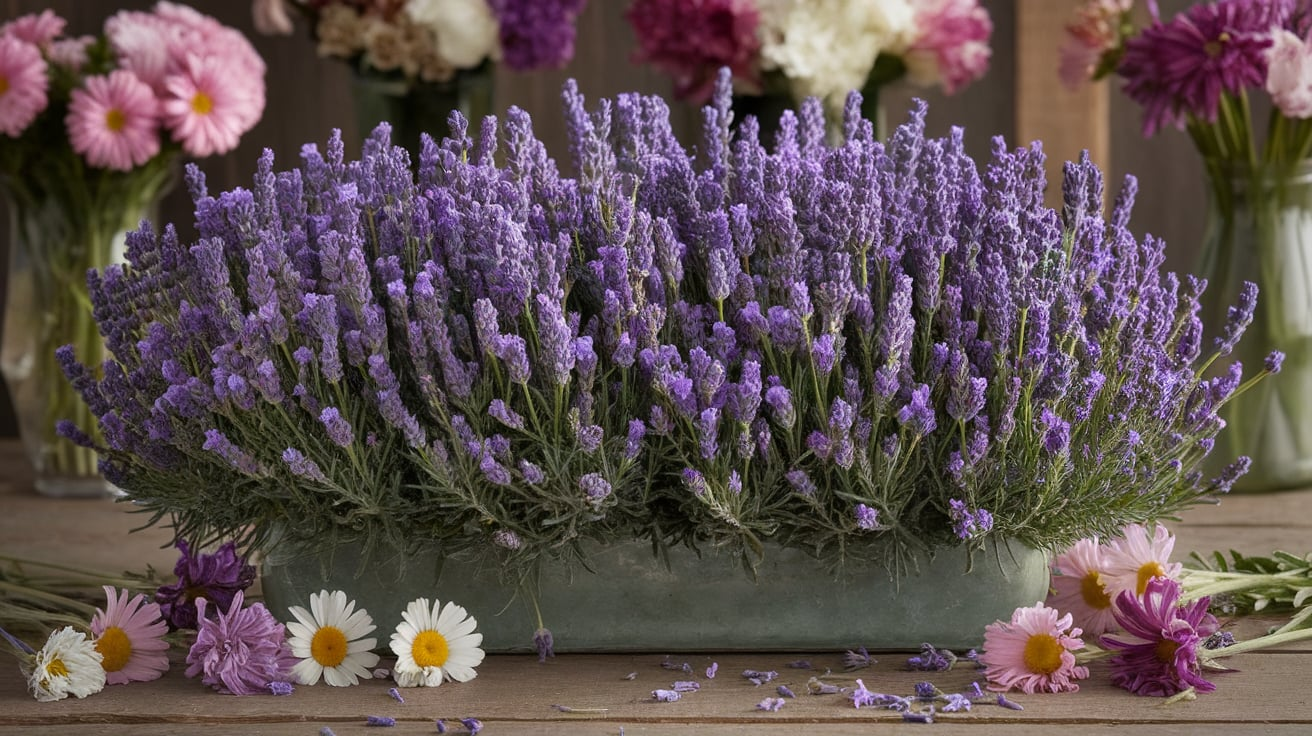
Planting in groups or clumps gives a fuller look and saves you work.
Why it helps:
- Easier to water, weed, and mulch around groups.
- Less bare soil = fewer weeds.
- Looks natural and balanced.
Try planting in groups of 3, 5, or 7 for the best look. This also helps plants support one another and grow more effectively together.
9. Pick Easy-Care Shrubs

Shrubs give your garden structure. They fill space and don’t need weekly care. Some even flower beautifully.
Try these easy ones:
- Spirea: Tiny flowers grow in many climates.
- Hydrangea: Big blooms with little work.
- Boxwood: Great for borders or shapes.
- Butterfly bush: Blooms all summer and attracts pollinators.
They often need only light pruning once a year.
10. Let Some Plants Self-Seed
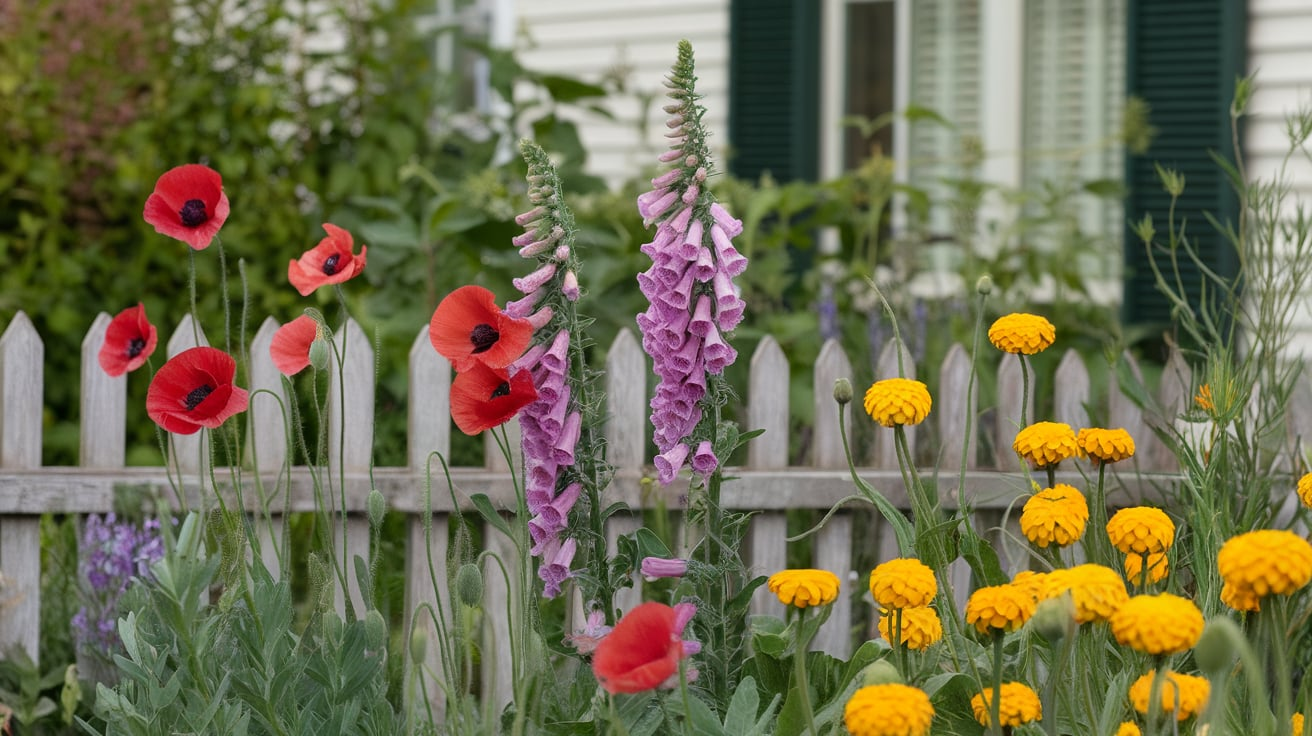
Self-seeding plants drop their own seeds and grow again next year. This saves you from planting again.
Good choices:
- Poppies: Come back in the same spot or nearby.
- Foxglove: Tall, colorful, and great for back borders.
- Nigella (Love-in-a-Mist): Airy and blooms for weeks.
- Calendula: Pretty and even edible.
Let some flower heads dry on the plant so they can spread naturally.
11. Use Natural Paths
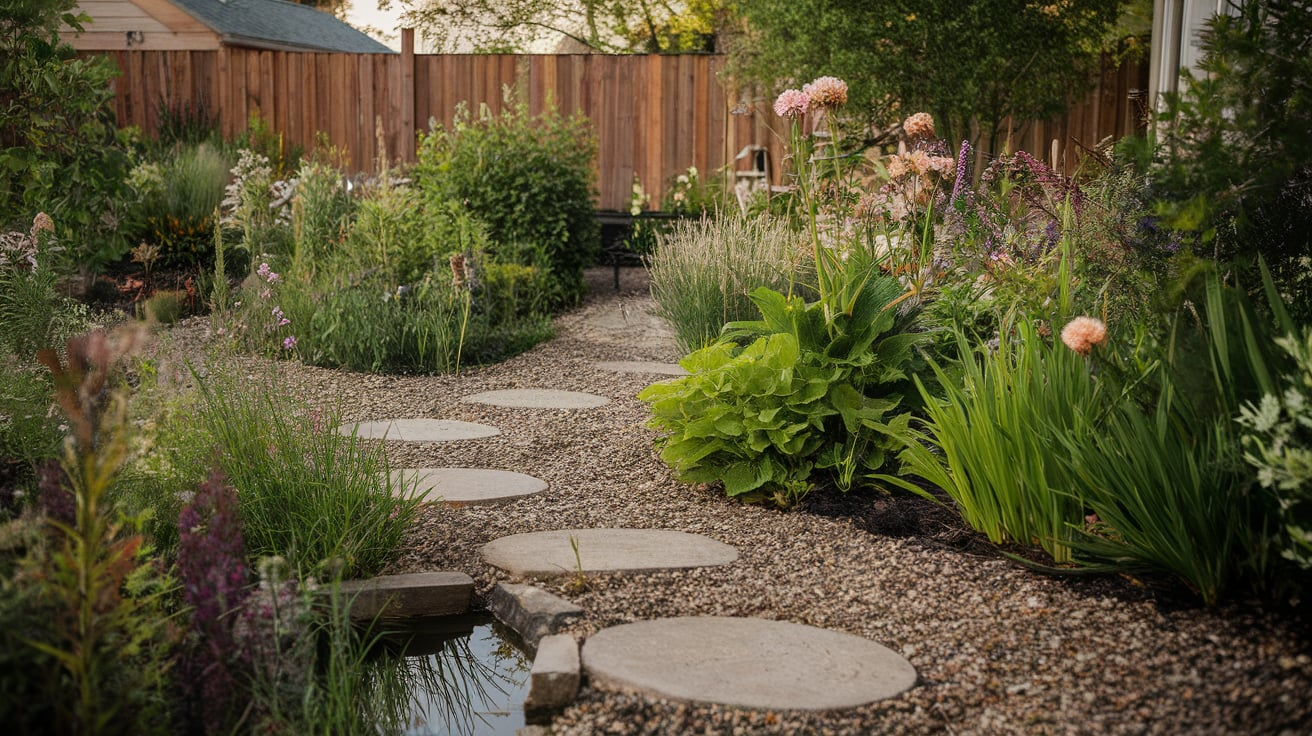
Paths make it easy to move around your garden. They also break up the space and help it look clean.
Ideas for low-care paths:
- Gravel: Cheap, easy to lay, and lasts long.
- Mulch: Soft to walk on and blends in.
- Stepping stones: Great for curved paths.
Add a garden edge to keep paths neat and stop mulch or gravel from spreading.
12. Keep Tools Nearby
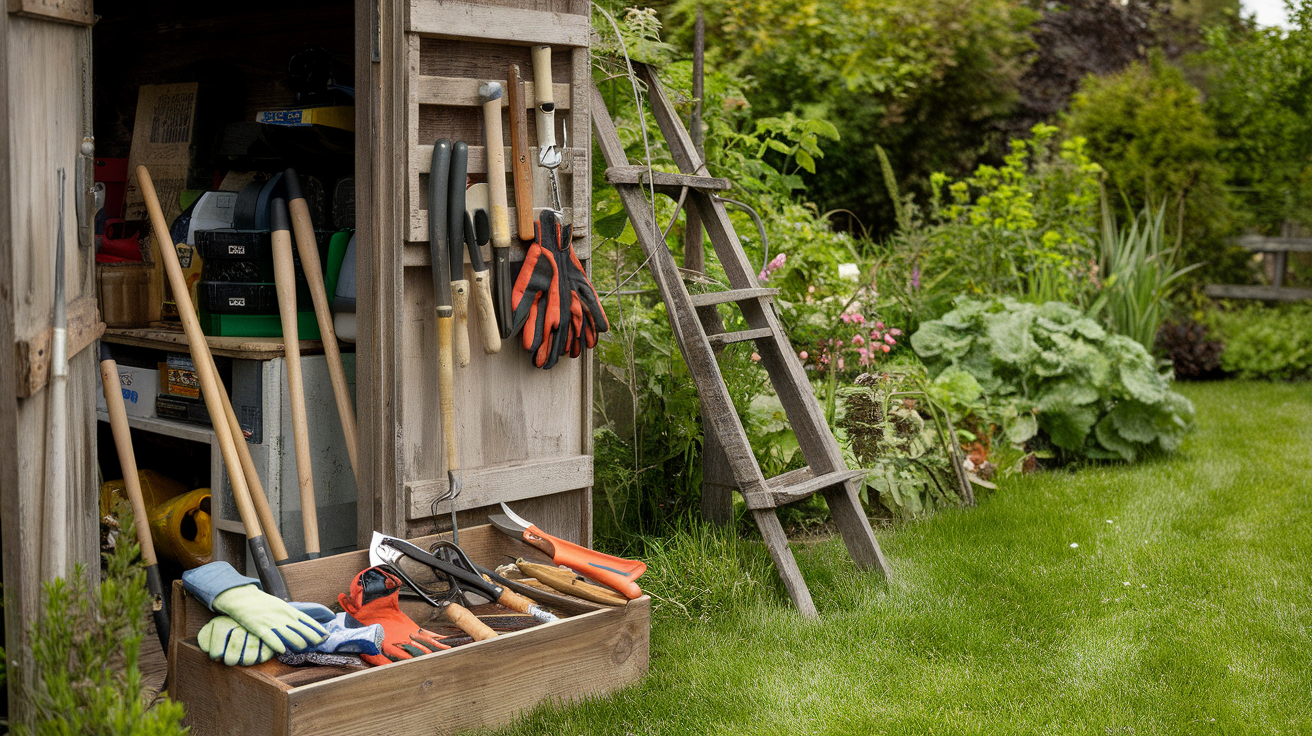
When tools are close by, you’re more likely to do small tasks. That stops work from building up.
You can:
- Hang a tool rack near the garden.
- Use a bucket or basket to carry essentials.
- Store tools in a bench with a lid or a small shed.
Keep gloves, pruners, a trowel, and a watering can ready.
13. Add Tall Plants at the Back
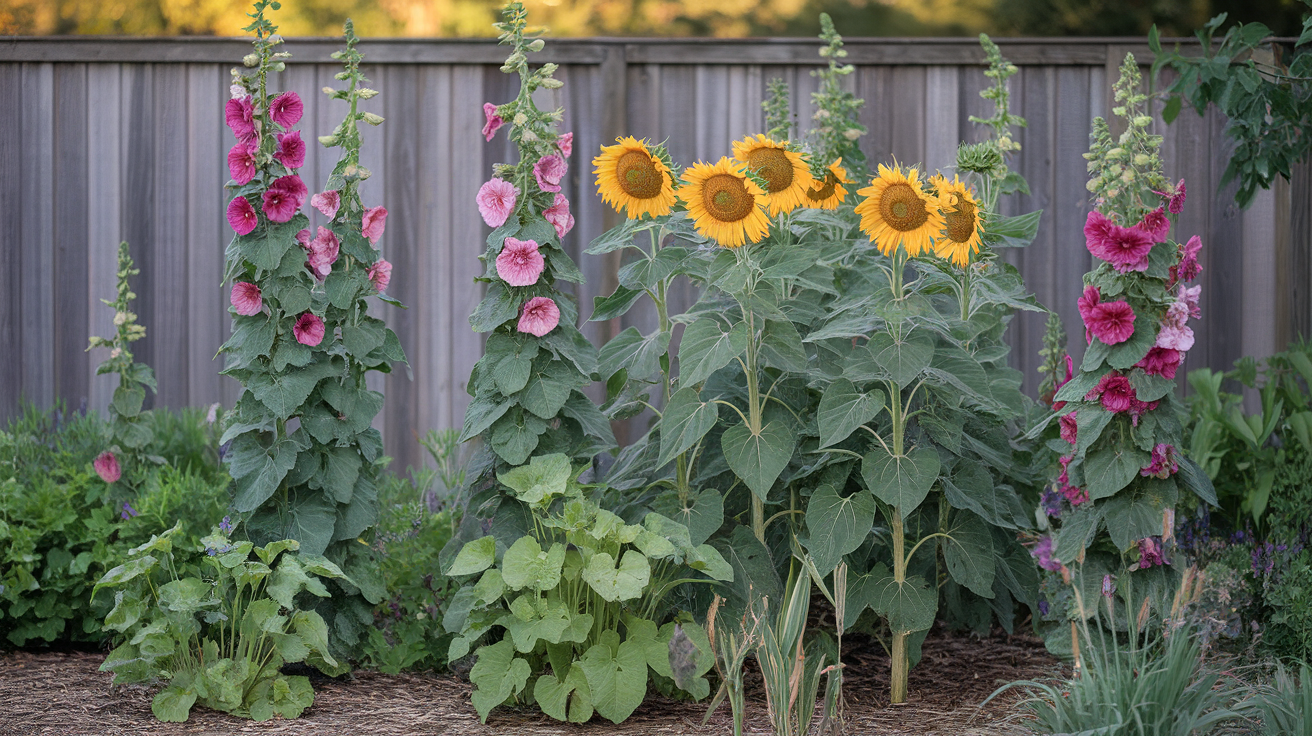
Tall plants create a natural screen, making borders look layered. They draw the eye up and give you privacy, too.
Good options:
- Hollyhocks: Classic cottage garden look.
- Sunflowers: Big, cheerful, and fast-growing.
- Delphinium: Tall spikes of blue or purple flowers.
Support them with stakes if needed. Plant them behind lower flowers for a full, rich look.
14. Choose Plants That Don’t Need Deadheading

Deadheading means cutting off dead blooms to keep flowers coming. Some plants don’t need this to keep blooming.
Try these easy-care types:
- Coreopsis: Blooms for months.
- Sedum (Stonecrop): Needs almost no work.
- Yarrow: Drought-tolerant and long-lasting.
Less cutting means more free time.
15. Add Features That Don’t Need Water
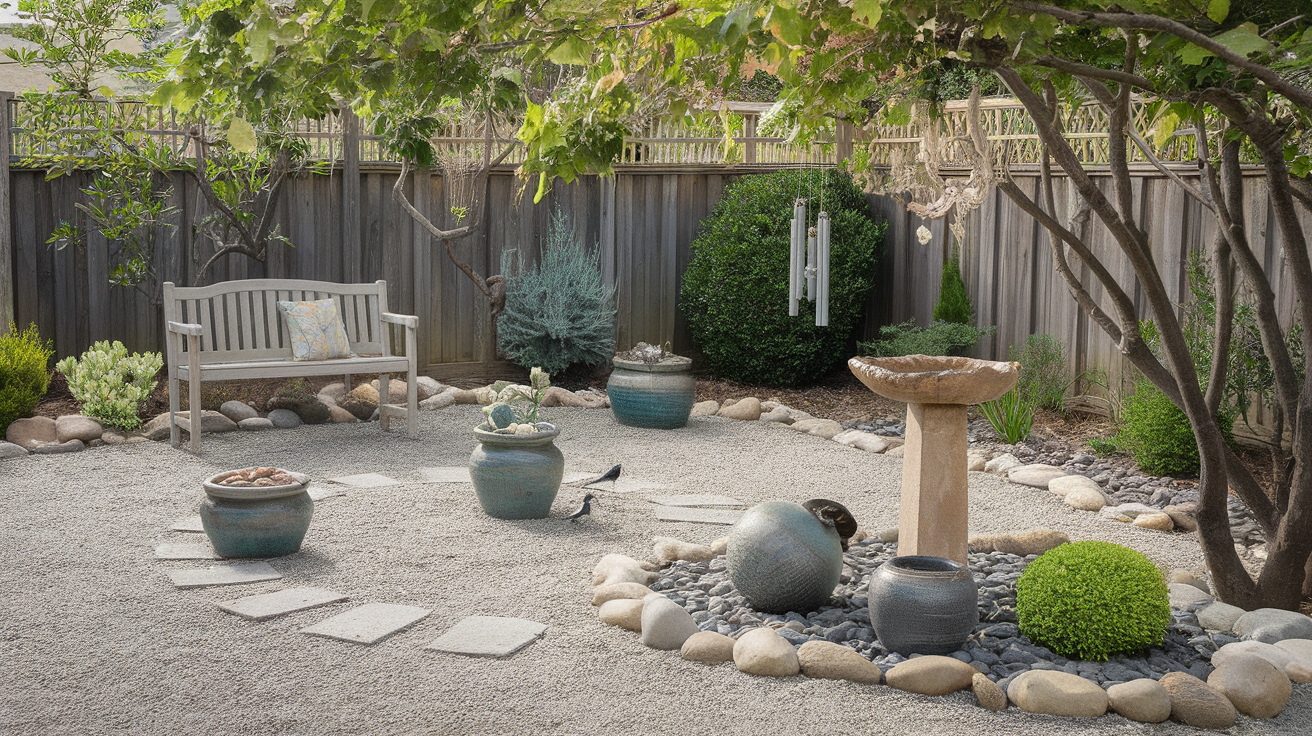
Fill parts of your garden with things that look nice but don’t need care.
Ideas:
- Benches: Great for sitting and enjoying the view.
- Birdbaths: Attract birds and add charm.
- Decorative pots: Can be empty or filled with stones.
- Wind chimes or statues: Add movement and sound.
These make your space feel finished with zero upkeep.
16. Skip the Lawn
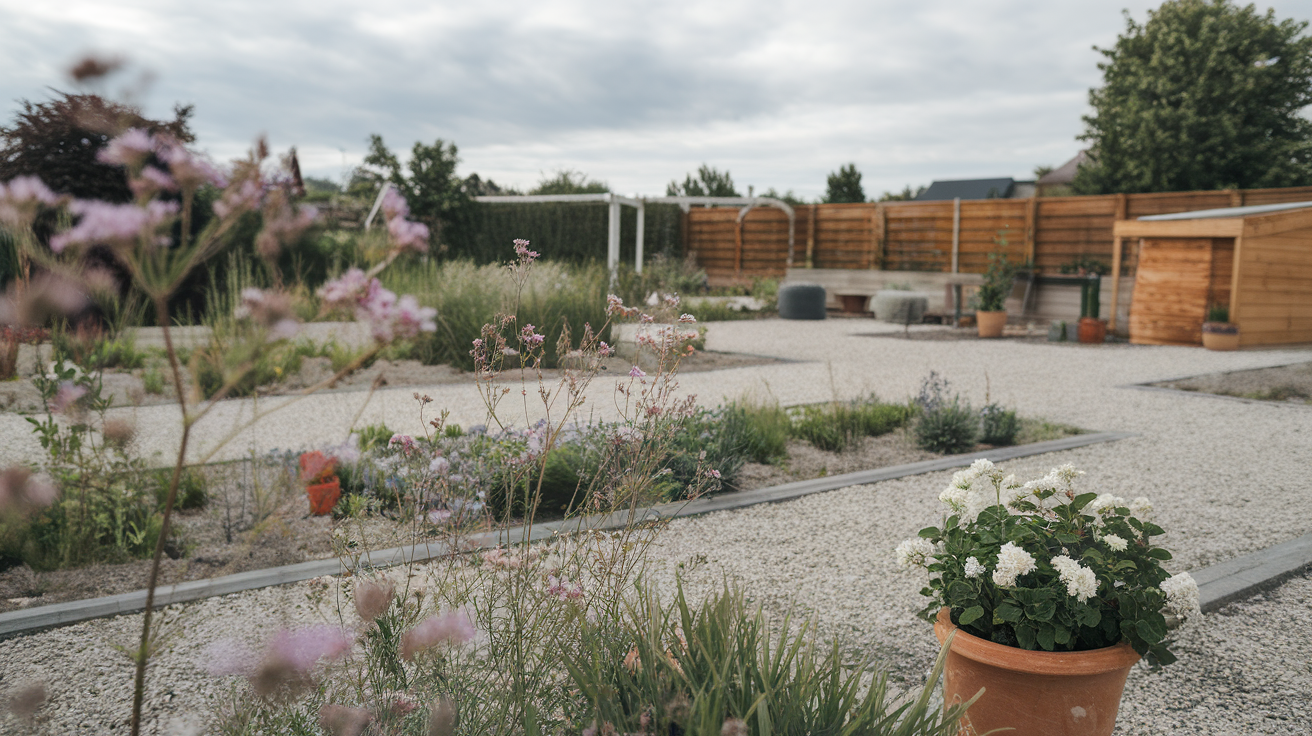
Lawns take time, mowing, watering, and feeding. Instead, try:
- Gravel areas with potted plants.
- Wildflower patches that need little mowing.
- Creeping thyme or clover, Green but low-care.
This cuts your work way down and saves water, too.
17. Let Nature Lead
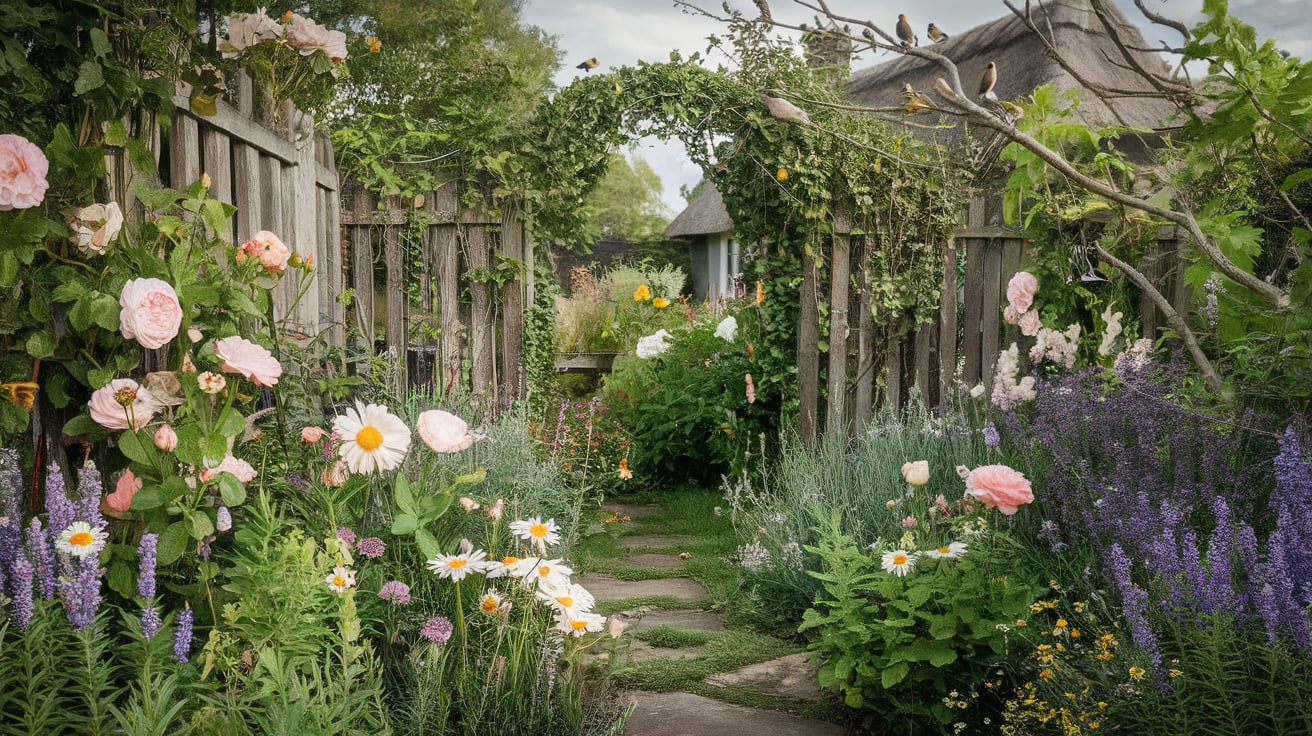
The beauty of a cottage garden lies in its wild, natural feel. It’s okay if it’s not perfect. Let plants grow a bit freely. You can tidy it a few times a year.
Why it works:
- You stress less about weeds or dead blooms.
- It feels more natural and relaxed.
- You enjoy watching the garden change on its own.
A low-maintenance garden still needs love, but not perfection.
Common Mistakes to Avoid
Even a low-maintenance garden can become hard to manage if you make a few small mistakes. Some things to watch out for so your cottage garden stays easy and beautiful.
- Planting too much at once: Start small to avoid feeling overwhelmed.
- Ignoring sunlight needs: Pick plants based on how much sun your garden gets.
- Choosing high-care plants: Avoid flowers that need constant pruning or deadheading.
- Watering too much or too little: Check soil and group plants by water needs.
- Spacing plants wrong: Too close = crowding, too far = weeds.
- Not improving soil: Mix in compost for better plant health and less work.
- Letting weeds take over: Use mulch and pull weeds early.
- Forgetting about all seasons: Use plants that bloom at different times or stay pretty year-round.
- Not checking plant size: Know how big each plant will grow to avoid overcrowding.
- Trying to make it perfect: A little mess is part of the charm of a cottage garden.
Conclusion
A cottage garden can be full of life, color, and joy, without taking up all your time. I’ve learned that with the right plants and a little planning, it’s easy to keep things low-maintenance.
You don’t need to be in the garden every day to make it beautiful. Start small. Try a few of the ideas that sound right for your space. Watch how your garden grows, and then add more as needed.
Don’t stress if things aren’t perfect. That wild, lived-in look is part of what makes a cottage garden special.
I hope these ideas help you build a space you love, one that brings peace, not pressure. A garden should be a joy, not a job.
So take your time, enjoy the process, and let your garden grow at its own pace.

